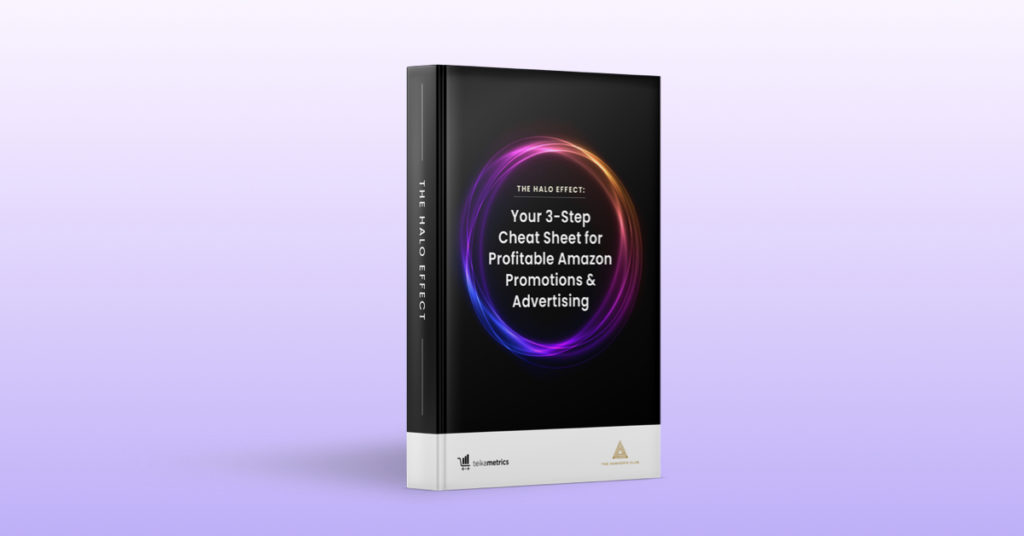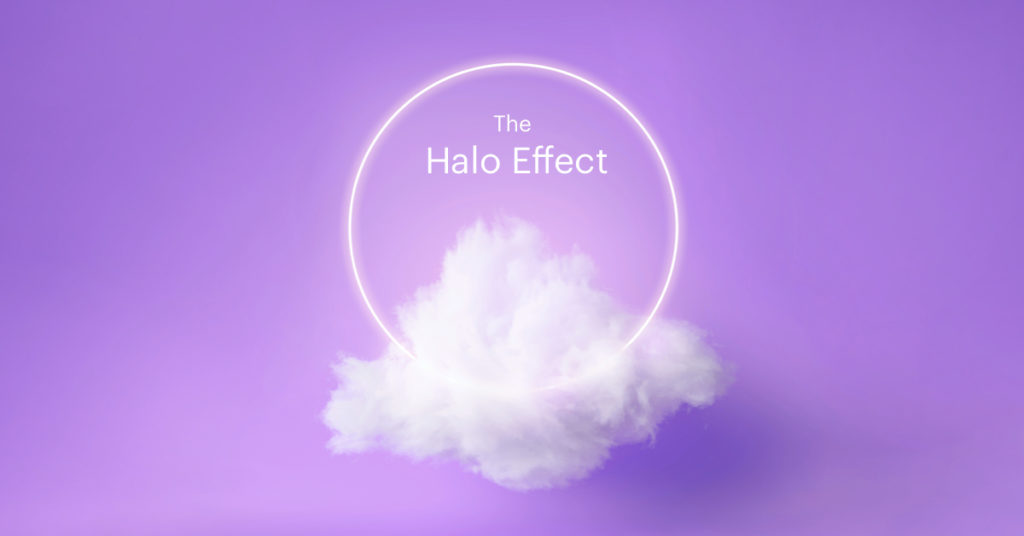Be honest.
When it comes to Amazon promotions and advertising, have you ever found yourself thinking…
- “Why bother?”
- “It’s too competitive.”
- “My margins are too narrow.”
We’ve all been there.
And no, you’re not just imagining it—it IS much tougher now to preserve your margins while shelling out on promotions and PPC.
Ouch, my margins!
There’s no getting around it: Margins have never been more tightly squeezed.
Compounded by an inflation rate comparable to WWII, the pandemic-induced supply chain woes have sent production costs through the roof—and profit margins through the floor.
So as an innocent vendor just trying to make an honest living in this crazy landscape, how can you make your promotions work for you?
Well, Halo there!
Enter the Halo Effect.
The effect occurs any time you run a promotion or an ad campaign.
Here’s how it works and why you should care.
Put simply; the Halo period is the stretch of time after the promotional period ends, during which:
- The product continues to sell at a higher unit volume per day
- These sales are achieved with zero incremental margin investment
- The “free” sales boost typically lasts for 3 to 5 weeks
This mechanic is surprisingly misunderstood and rarely used to its full potential.
This gives an unfair advantage to those who know how to work the algorithm. In many cases, we’ve seen a robust Halo strategy yield a near-50% increase in full-margin unit volume days and weeks after the end of the promotion.
The simple version: These were incremental sales our clients didn’t have to pay for.
So what are the factors that make for a good, strong, healthy Halo Effect? And perhaps more confusingly, why would Amazon grant you “free” sales to begin with?
Here’s what’s really going on behind the scenes.
You had me at Halo…
When you run a promotion or an ad campaign, you’re “auditioning” for Amazon.
Your promotional and ad dollars are buying your products greater visibility—but now, the pressure’s on you to show Amazon what you can do with that visibility.
If they like what they see, they’re going to reward you with more traffic, more customers and more sales.
And why wouldn’t they? If during that promotional period, you convert a high volume of traffic and deliver a consistently exceptional customer experience, it’s in Amazon’s interest to drive more traffic to your listings.
And herein lies the real magic of nailing the Halo period—a shot at winning some long-lasting brownie points with Amazon.
Unsurprisingly, the flip side is that if your metrics are sub-par, Amazon will view your brand much as Simon Cowell would view a tone-deaf American Idol act: A candidate who had their time in the spotlight and blew it.
We know which side of Simon we’d rather be on.
Case study: The Halo Effect in practice
In this case, our client’s objective was simply to boost incremental sales.
The promotion: A week-long Best Deal on Amazon, discounted at 20% below MAP (Minimum Advertised Price).
And boost sales it did… but a quick look at the BSR clearly illustrates that the end of the deal isn’t the end of the story.
The numbers
When selling at MAP before the deal, the ASIN averaged 8.14 units sold per day.
The 7-day deal itself yielded an increased unit volume of 59.17 per day, during which the product’s BSR climbed from roughly 10,000 to sub-1,000.
But here’s where things get interesting.
Once the price returned to MAP after the deal, the BSR did drop back to baseline level—but nowhere near as quickly as you’d expect.
During the 22 days post-promotion, sales averaged 11.95 units per day: A 46.85% increase in daily unit volume.
The relevant point is that these sales were achieved at full margin without any incremental spend.
That’s a lot of extra margin dollars.
Build a bigger, better halo
And now for the good stuff.
There is a predictable science behind every Halo, and it pays to understand it.
At the core of this science is one key principle:
Promotions and ads drive TRAFFIC, not sales. What drives sales is your traffic multiplied by your conversion rate.
For that reason, your Halo’s only as powerful as your detail page. It’s, therefore, crucial to make sure all your on-page optimization is in good shape—recent positive reviews, 2-day shipping, images, copy, etc.—before embarking on a quest for a profitable Halo.
And with that rule in mind, here’s Part 1 of the 3-point checklist that we’ve used to consistently knock the Halo period out of the park.
1: Inventory planning
Let’s kick off with the #1 mistake brands make with the post-promotion window.
Mismanaged inventory has stopped more Halos dead in their tracks than any other factor—and cost brands many millions of dollars in the process.
Why is it such a big deal?
Mostly because the Halo Effect is so misunderstood, it’s dangerously easy to underestimate the amount of inventory you’ll need to avoid going out of stock during a promotion and its aftermath.
And as we all know, a single OOS (out-of-stock) penalty is enough to undo not just the benefits of the promotion, but many months of hard work preceding it.
There are two components here, both of which take careful planning to get right:
- Inventory during the promotion itself
- Inventory during the Halo period
It sounds easy enough. But here are the surprising stats, based on real-life data from hundreds of clients:
- For a 10 to 20%-off Best Deal (or the off-Amazon equivalent), an acceptable margin of safety is usually around 5 to 15 TIMES your usual demand, DURING the promotion.
- During a Deal of the Day or equivalent, a whole month’s worth of standard inventory is likely to sell through in as little as 24 hours.
- The Halo component: In addition, you’re likely to need an additional 50% on top of your usual inventory for the 3 to 5-week Halo following the promotion.
With these guidelines, you can make sure you aren’t caught off-guard by your next unexpectedly successful promotion.
Complete your Halo strategy
Want the whole checklist? We’ve got you covered.
Simply sign up for our free feature-length ebook on the Halo Effect, and pick up right where you left off.






